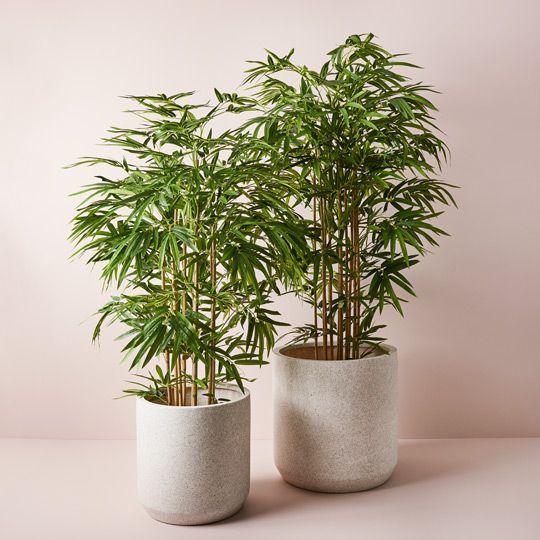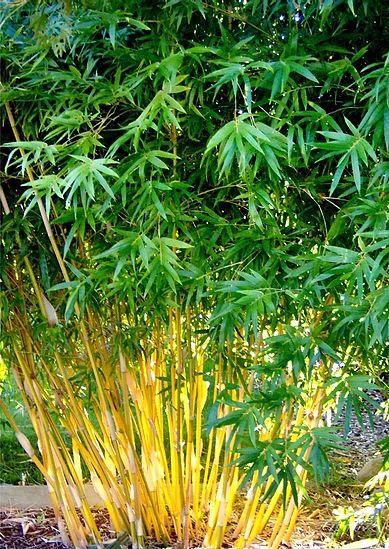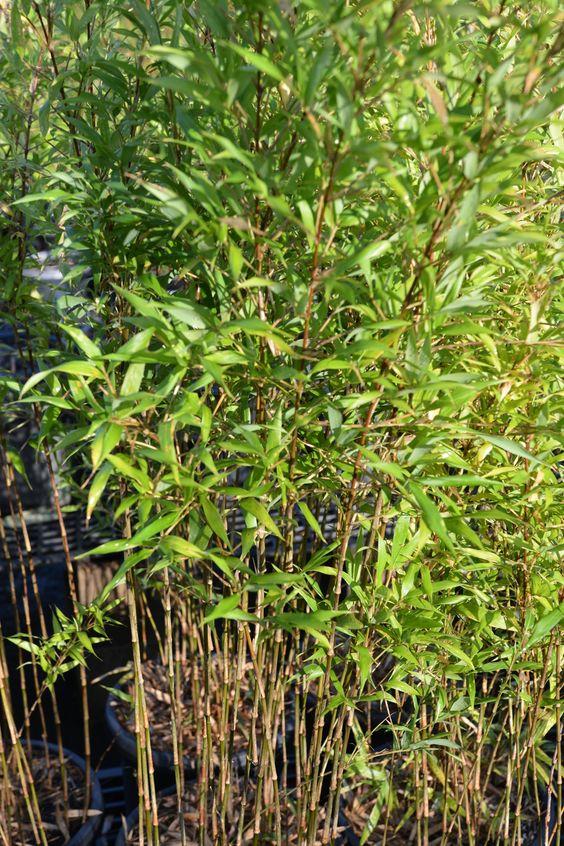



Table of Contents
- Introduction
- Suitable Types of Bamboo for Indoor Use
- Care Tips for Indoor Bamboo
- General Benefits of Bamboo
- Perspectives from Vastu Shastra
- Perspectives from Feng Shui
- Conclusion
- Faq's
Introduction
Bamboo, often celebrated for its versatility and beauty, is not only a popular decorative plant but also holds significant cultural and spiritual importance in various traditions, particularly in Vastu Shastra and Feng Shui.
This article explores the numerous benefits of the bamboo plant, incorporating perspectives from these two ancient practices.
Bamboo is a versatile and attractive plant that can enhance indoor spaces while offering various benefits. While many bamboo species thrive outdoors, several types are well-suited for indoor environments.
Below are some of the most suitable bamboo varieties for indoor use, along with care tips to ensure they flourish.

Suitable Types of Bamboo for Indoor Use
Phyllostachys aurea (Golden Bamboo)
 Golden Bamboo
Golden Bamboo
- Height: Typically grows 5 to 8 feet indoors.
- Light Requirements: Prefers at least 6 hours of sunlight daily.
- Characteristics: Known for its bright green canes that turn golden with age, this bamboo is a popular choice for its aesthetic appeal and rapid growth. It requires a sturdy container to manage its size and growth.
Pleioblastus viridistriatus (Dwarf Green Stripe Bamboo)
 Dwarf Green Stripe Bamboo
Dwarf Green Stripe Bamboo
- Height: Usually stays around 2.5 to 4 feet tall.
- Light Requirements: Thrives in bright, filtered sunlight.
- Characteristics: This dwarf variety has attractive green-and-yellow striped leaves, making it an excellent choice for smaller spaces or as a decorative accent.
Pseudosasa japonica (Arrow Bamboo)
 Japanese Arrow Bamboo
Japanese Arrow Bamboo
- Height: Can grow up to 6 feet indoors.
- Light Requirements: Adapts well to both shade and full sun.
- Characteristics: Arrow bamboo is known for its hardy nature and can tolerate lower light conditions better than many other bamboo species.
Bambusa multiplex (Alphonse Karr)
 Alphonse Karr
Alphonse Karr
- Height: Generally reaches about 6 to 10 feet indoors.
- Light Requirements: Prefers bright light but can tolerate partial shade.
- Characteristics: This clumping bamboo features beautiful golden-yellow canes with green stripes and is known for its dense foliage.
Chimonobambusa marmorea (Variegated Bamboo)
 Chimonobambusa marmorea (Variegated Bamboo)
Chimonobambusa marmorea (Variegated Bamboo)
- Height: Typically grows up to 4 feet tall.
- Light Requirements: Prefers bright, indirect light.
- Characteristics: Known for its striking variegated leaves, this bamboo adds visual interest and works well in decorative arrangements.
Sasaella masamuneana 'Albostriata'
 Sasaella masamuneana 'Albostriata'
Sasaella masamuneana 'Albostriata'
- Height: Stays relatively short, around 2 to 3 feet.
- Light Requirements: Thrives in partial shade.
- Characteristics: This compact variety has beautiful white-striped leaves, making it an attractive choice for indoor settings.
Hibanobambusa tranquillans 'Shiroshima'
 Hibanobambusa tranquillans 'Shiroshima'
Hibanobambusa tranquillans 'Shiroshima'
- Height: Grows up to about 4 feet.
- Light Requirements: Prefers bright light but can adapt to lower light levels.
- Characteristics: This bamboo features striking white-striped foliage and is often used in decorative pots.
Care Tips for Indoor Bamboo
Light Requirements
Most bamboo varieties require bright light to thrive. Place them near windows where they can receive at least 6 hours of sunlight daily. If natural light is limited, consider using grow lights.
Humidity Levels
- Bamboo prefers humid conditions, which can be challenging indoors. To increase humidity:
- Use a pebble tray filled with water beneath the plant pot.
- Mist the leaves regularly with a spray bottle.
- Consider using a small oscillating fan to mimic outdoor breezes and improve air circulation.
Watering Needs
Indoor bamboo should be kept slightly moist but not soggy. Overwatering can lead to root rot, while underwatering can stress the plant. Check moisture levels regularly and adjust watering accordingly more during the summer months and less in winter.
Soil Requirements
Use well-draining potting soil enriched with organic matter to support healthy growth. A high-nitrogen slow-release fertilizer applied during the growing season can help nourish the plant.
Pruning and Maintenance
Regular pruning helps maintain the shape of your bamboo and encourages new growth. Remove any yellow or damaged leaves and cut back older canes at soil level if necessary.
Transplanting
As your bamboo grows, it may need to be transplanted into a larger pot or divided to prevent overcrowding. This is best done in spring or early summer when the plant is actively growing.
Choosing the right type of bamboo for indoor use can enhance your living space while providing numerous benefits such as air purification and aesthetic appeal. By understanding the specific needs of each variety and providing appropriate care, you can enjoy the beauty and tranquility that indoor bamboo brings to your home or office environment. Whether you opt for the towering Golden Bamboo or the compact Dwarf Green Stripe Bamboo, these plants are sure to add a unique touch to your decor while promoting positive energy in alignment with Vastu Shastra and Feng Shui principles.
General Benefits of Bamboo
1. Air Purification
Bamboo is renowned for its exceptional ability to purify air. It absorbs pollutants and releases oxygen, making it an excellent choice for improving indoor air quality. Studies suggest that bamboo can absorb up to 35% more carbon dioxide than other plants of similar size. This makes it an ideal choice for urban environments where air quality is often compromised.
2. Aesthetic Appeal
The elegant appearance of bamboo adds a touch of tranquility and natural beauty to any space. Its tall, slender stalks can enhance the decor of homes and offices alike, contributing to a serene environment. Bamboo can be used in various forms such as potted plants, wall art, or even furniture allowing for creative expression in interior design.
3. Easy Maintenance
Bamboo plants are relatively easy to care for, requiring minimal attention. They thrive in various conditions and can be grown in soil or water, making them accessible for both novice and experienced gardeners. With proper lighting and occasional watering, bamboo can flourish without much effort.
4. Symbol of Strength and Flexibility
In many cultures, bamboo represents resilience due to its ability to bend without breaking. This characteristic symbolises adaptability and strength, making it a powerful emblem in personal growth and development. The ability to withstand strong winds while remaining upright serves as a metaphor for overcoming life's challenges.
5. Environmentally Friendly
Bamboo is one of the fastest-growing plants on Earth, capable of growing up to three feet in just one day under optimal conditions. This rapid growth makes it a sustainable resource for various industries, including construction, textiles, and paper production. Using bamboo products can help reduce deforestation and promote environmental sustainability.
Perspectives from Vastu Shastra
Vastu Shastra, the ancient Indian science of architecture, emphasizes harmony between human dwellings and nature. Here's how bamboo fits into Vastu principles:
1. Placement for Prosperity
According to Vastu Shastra, placing bamboo in the east or southeast corner of a home is believed to attract wealth and prosperity. This positioning aligns with the energy flow associated with these directions, enhancing financial stability and abundance.
2. Balancing Elements
Bamboo symbolises the wood element in Vastu, which is one of the five elements (earth, wind, fire, water, wood). Incorporating bamboo helps achieve balance among these elements, fostering a harmonious living environment. This balance is essential for promoting positive energy flow throughout the space.
3. Enhancing Relationships
A pair of bamboo stalks is thought to represent love and marital happiness. Meanwhile, three or six stalks promote overall happiness in life. By strategically placing these arrangements in specific areas of the home such as the bedroom or living room you can enhance emotional bonds with family members or partners.
4. Decorative Uses
Beyond its spiritual significance, bamboo can be used for various decorative purposes ranging from furniture to wall art enhancing both aesthetic value and positive energy in spaces. Bamboo furniture is not only stylish but also durable and eco-friendly.
Also Read: 16 Air Purifying Plants For Clean Air In Your Home
Perspectives from Feng Shui
Feng Shui, the Chinese practice of arranging space to promote harmony and balance, also recognizes the benefits of bamboo:
1. Good Luck Symbol
In Feng Shui, bamboo is considered a lucky plant that brings good fortune when placed correctly within a home or office. It is often recommended to position bamboo in the east or south corners for optimal results.
These directions are associated with health and prosperity in Feng Shui principles.
2. Number of Stalks Significance
The number of stalks in a bamboo arrangement carries specific meanings:
- Two stalks: Symbolises love and partnership.
- Three stalks: Represents happiness, wealth, and long life.
- Five stalks: Promotes balance across all life areas.
- Six stalks: Attracts good luck.
- Eight stalks: Encourages growth and abundance.
- Ten stalks: Represents perfection.
- Twenty-one stalks: Offers powerful blessings.
Choosing the right number of stalks based on your intentions can amplify the desired effects within your space.
3. Energy Flow Enhancement
Bamboo is believed to enhance the flow of positive energy (Chi) within a space. Its flexible nature symbolizes adaptability and freedom, making it ideal for creating a peaceful atmosphere conducive to relaxation and productivity.
4. Purification Properties
Similar to its air-purifying capabilities recognized in general benefits, bamboo also serves as a symbol for cleansing negative energies in Feng Shui practices. Keeping bamboo near entrances or windows can help ward off negativity while inviting positive energy into your home.
Additional Cultural Significance
- Beyond its practical applications in Vastu Shastra and Feng Shui, bamboo carries cultural significance across various societies:
- Asian Cultures: In many Asian cultures, particularly Chinese culture, bamboo is associated with integrity and resilience due to its ability to withstand harsh conditions while remaining upright.
- Artistic Inspiration: Bamboo has inspired countless works of art poetry, paintings, music symbolising purity and simplicity throughout history.
- Culinary Uses: Bamboo shoots are a popular ingredient in many Asian cuisines due to their unique flavor and nutritional benefits.
Conclusion
The bamboo plant offers an array of benefits that extend beyond mere aesthetics; it serves as a powerful symbol in both Vastu Shastra and Feng Shui practices. By incorporating bamboo into your living or working spaces, you can harness its potential for promoting prosperity, harmony, and well-being while enhancing air quality and aesthetic appeal.
Whether you seek financial success or simply wish to create a tranquil environment filled with positive energy, the bamboo plant stands out as an excellent choice for any home or office setting. With its myriad benefits, from air purification to cultural significance bamboo truly embodies nature's gift to humanity. Embrace this remarkable plant today and invite its blessings into your life!
explore further
Latest from Contemporary ideas
More from Innovations
Resources
Dwello, for every home buyer, is a way to go from 'I feel' to 'I know', at no extra cost.




